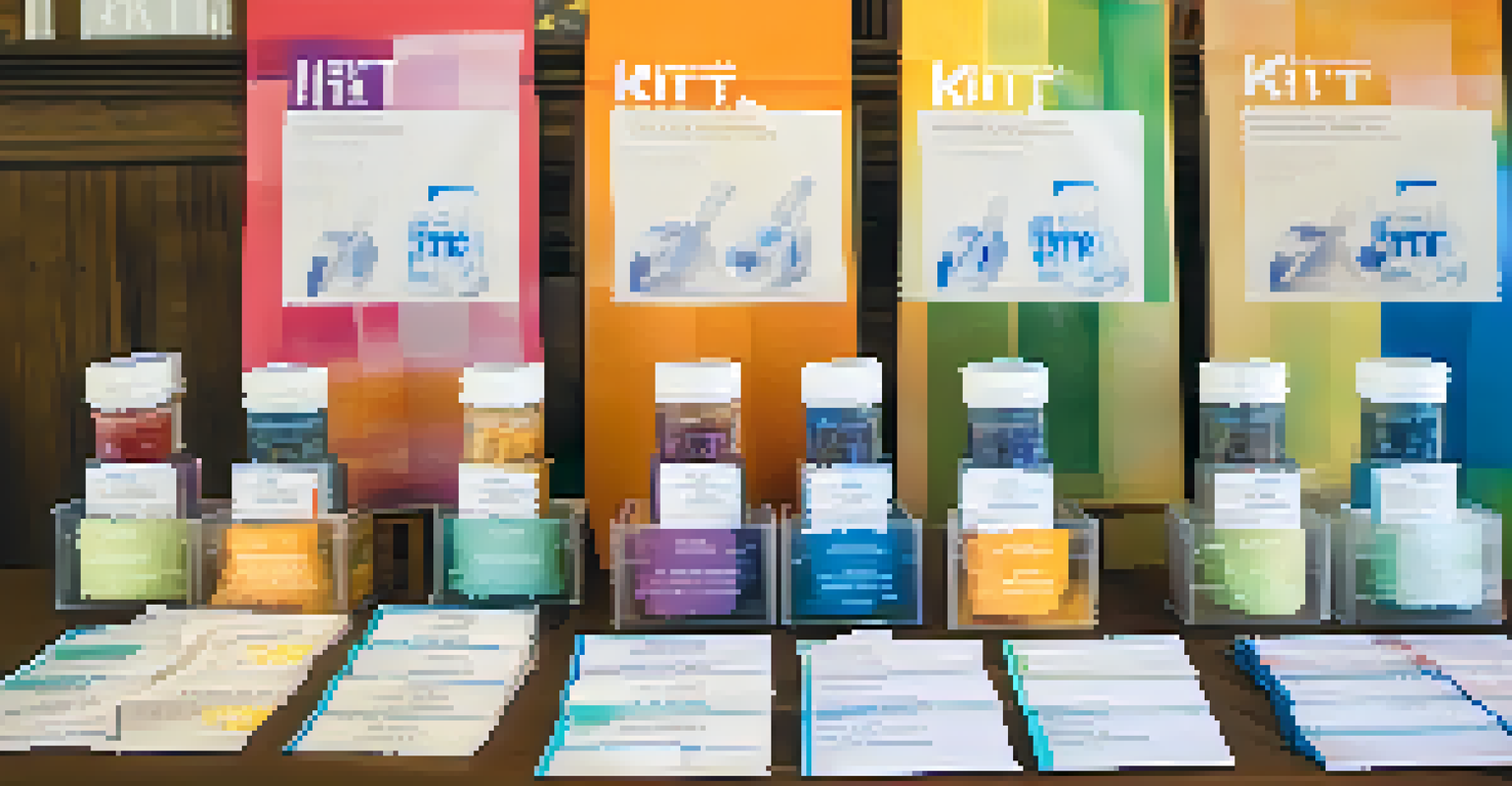Myths and Facts About Harm Reduction in Addiction Care

Understanding Harm Reduction: A Compassionate Approach
Harm reduction is a public health strategy aimed at minimizing the negative consequences associated with drug use. It prioritizes the well-being of individuals by providing support and resources rather than punishment. This approach recognizes that while abstinence is ideal, it may not be feasible for everyone, and that reducing harm can lead to safer and healthier lives.
Harm reduction is a set of practical strategies and ideas aimed at reducing negative consequences associated with drug use. It is also a movement for social justice built on a belief in the rights of people who use drugs.
For example, needle exchange programs help prevent the spread of diseases like HIV and hepatitis C by providing clean needles to those who inject drugs. By focusing on health rather than stigma, harm reduction opens doors for individuals to receive the support they need without fear of judgment.
Ultimately, harm reduction is about meeting people where they are and helping them make informed choices that lead to safer outcomes. It's a shift from a punitive mindset to one of compassion and understanding, which is crucial in addiction care.
Myth: Harm Reduction Promotes Drug Use
One of the most common myths is that harm reduction strategies encourage drug use. This misconception stems from a misunderstanding of the goals of harm reduction, which is not to promote drug use but to reduce its risks. By providing safer alternatives, individuals are empowered to make better choices regarding their health.

For instance, offering supervised consumption sites allows users to consume substances in a safe environment, reducing the likelihood of overdose. Research shows that these sites do not increase drug use rates; instead, they often lead users to seek treatment and support services.
Harm Reduction Saves Lives
Harm reduction strategies, like naloxone distribution, effectively reduce overdose deaths and improve overall community health.
By addressing the stigma and fear surrounding substance use, harm reduction can actually lead to decreased usage over time. It shifts the focus from morality to health, emphasizing that the priority should be keeping individuals safe rather than shaming them.
Fact: Harm Reduction Saves Lives
Numerous studies have demonstrated the effectiveness of harm reduction in saving lives. By providing access to naloxone, a medication that can reverse opioid overdoses, harm reduction initiatives have drastically reduced overdose deaths in various communities. This life-saving intervention is a prime example of how practical solutions can lead to real-world benefits.
The evidence is clear: harm reduction saves lives and leads to better health outcomes for individuals and communities.
In addition to naloxone distribution, harm reduction programs often include education on safer drug use and the provision of health services, such as mental health support and addiction treatment. This holistic approach addresses the multifaceted nature of addiction and promotes overall well-being.
Statistics from areas that have implemented harm reduction strategies show significant decreases in HIV transmission rates and drug-related deaths. These outcomes highlight that harm reduction doesn’t just change lives; it saves them.
Myth: Harm Reduction is Only for Drug Users
Another prevalent myth is that harm reduction only benefits those who use drugs, ignoring the broader community impact. In reality, harm reduction strategies provide benefits that extend beyond individual users, positively affecting families and communities. By decreasing the health risks associated with drug use, everyone can enjoy safer environments.
For example, when communities implement needle exchange programs, they not only help users but also reduce the number of discarded needles that pose risks to the public. This creates a cleaner, safer neighborhood for everyone, illustrating that harm reduction is a community-centered approach.
Harm Reduction Empowers Individuals
By promoting personal agency, harm reduction enables individuals to make informed choices about their health and seek support.
Moreover, these programs often engage community members in education and advocacy, fostering a supportive environment that can lead to broader societal change. Thus, harm reduction strengthens community ties while addressing addiction at its roots.
Fact: Harm Reduction is Evidence-Based
Harm reduction strategies are grounded in extensive research and evidence-based practices. Many health organizations, including the World Health Organization (WHO) and the Centers for Disease Control and Prevention (CDC), endorse harm reduction as an effective method for addressing substance use issues. This backing highlights the credibility and importance of these approaches.
Research indicates that harm reduction not only improves individual health outcomes but also reduces healthcare costs associated with untreated addiction and its consequences. By investing in harm reduction, communities can save money while improving public health.
Additionally, the data collected from harm reduction programs helps refine and enhance these strategies over time, ensuring they meet the evolving needs of individuals and communities. Evidence-based practices are essential in creating effective solutions for addiction care.
Myth: Harm Reduction Neglects Treatment
A common misconception is that harm reduction neglects the need for treatment and recovery. In fact, harm reduction often serves as a bridge to treatment by encouraging individuals to seek help without fear of judgment. Many harm reduction programs include pathways to treatment and recovery, emphasizing that both approaches can coexist.
For instance, when individuals engage in harm reduction programs, they often receive information about local treatment options, counseling, and support services. This proactive engagement can lead to better recovery outcomes, as individuals feel more comfortable exploring their options.
Harm Reduction Benefits Communities
Harm reduction initiatives not only assist drug users but also create safer environments for entire communities by reducing health risks.
Furthermore, harm reduction does not preclude the pursuit of abstinence; rather, it recognizes that recovery looks different for everyone. By providing a range of options, individuals can choose the path that best suits their needs and circumstances.
Fact: Harm Reduction Encourages Personal Agency
One of the most empowering aspects of harm reduction is that it promotes personal agency. By providing individuals with the knowledge and tools to make informed decisions, harm reduction fosters a sense of control over one's health and well-being. This empowerment is crucial for long-term recovery and self-efficacy.
For example, individuals who participate in harm reduction programs often report feeling more confident in their ability to manage their substance use and make healthier choices. This newfound sense of agency can lead to positive behavioral changes and a desire to seek further support.

By valuing personal choice and agency, harm reduction acknowledges that individuals are experts in their own lives. This respect for autonomy can significantly improve the relationship between individuals and healthcare providers, creating a collaborative environment for healing.
Moving Forward: The Future of Harm Reduction
The future of harm reduction looks promising as more communities recognize its benefits. As public health policies increasingly adopt harm reduction strategies, we can expect to see a shift in how society views addiction and substance use. This transformation is essential for creating healthier, more inclusive communities.
Engaging in public conversations about harm reduction helps to dismantle stigma and educate the public on its importance. As awareness grows, more individuals and families will feel empowered to seek help without the fear of judgment.
Ultimately, the continued advocacy for harm reduction will lead to a more compassionate approach to addiction care, emphasizing health, safety, and community support. Together, we can create an environment where everyone has access to the resources they need to thrive.